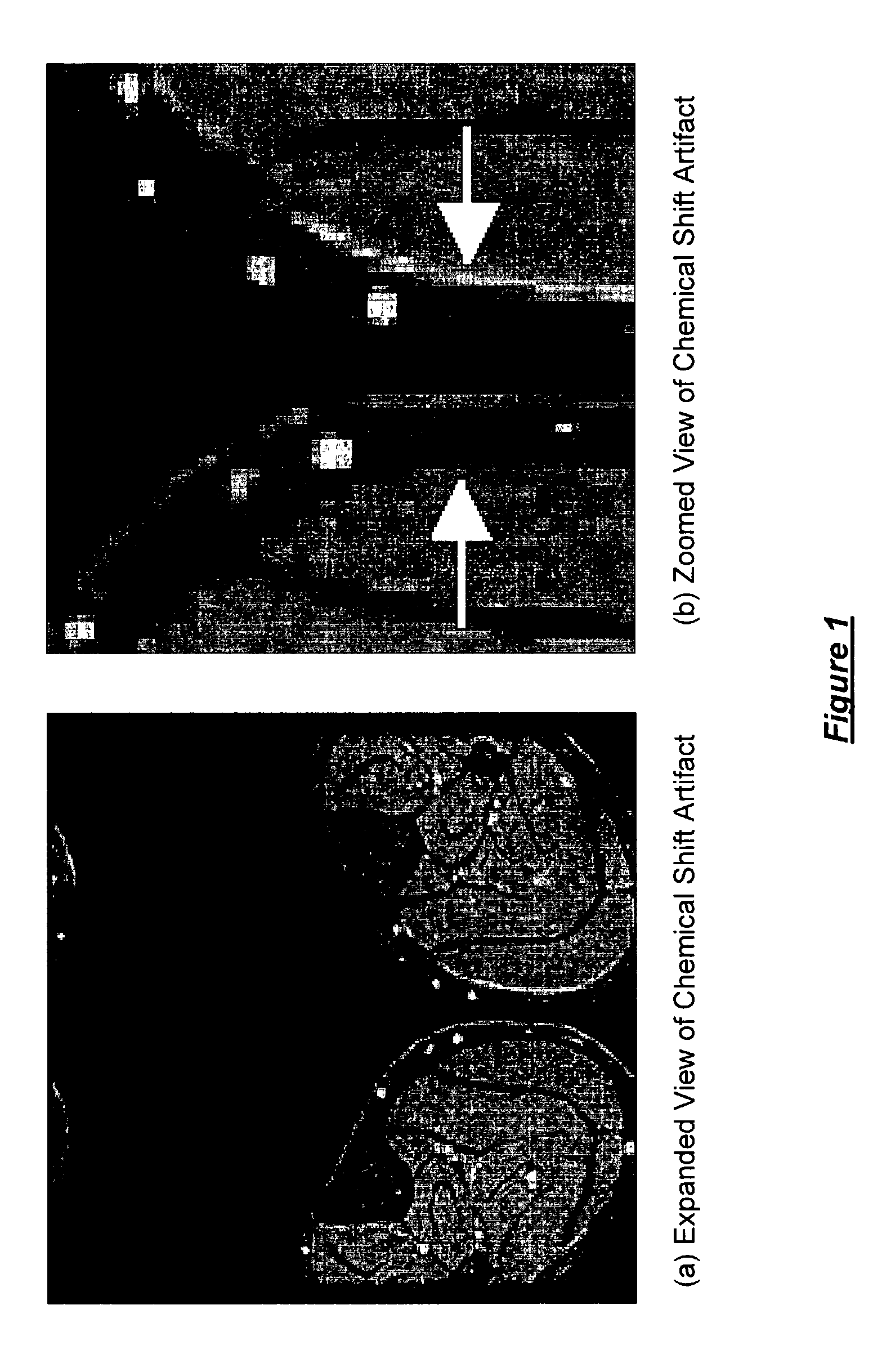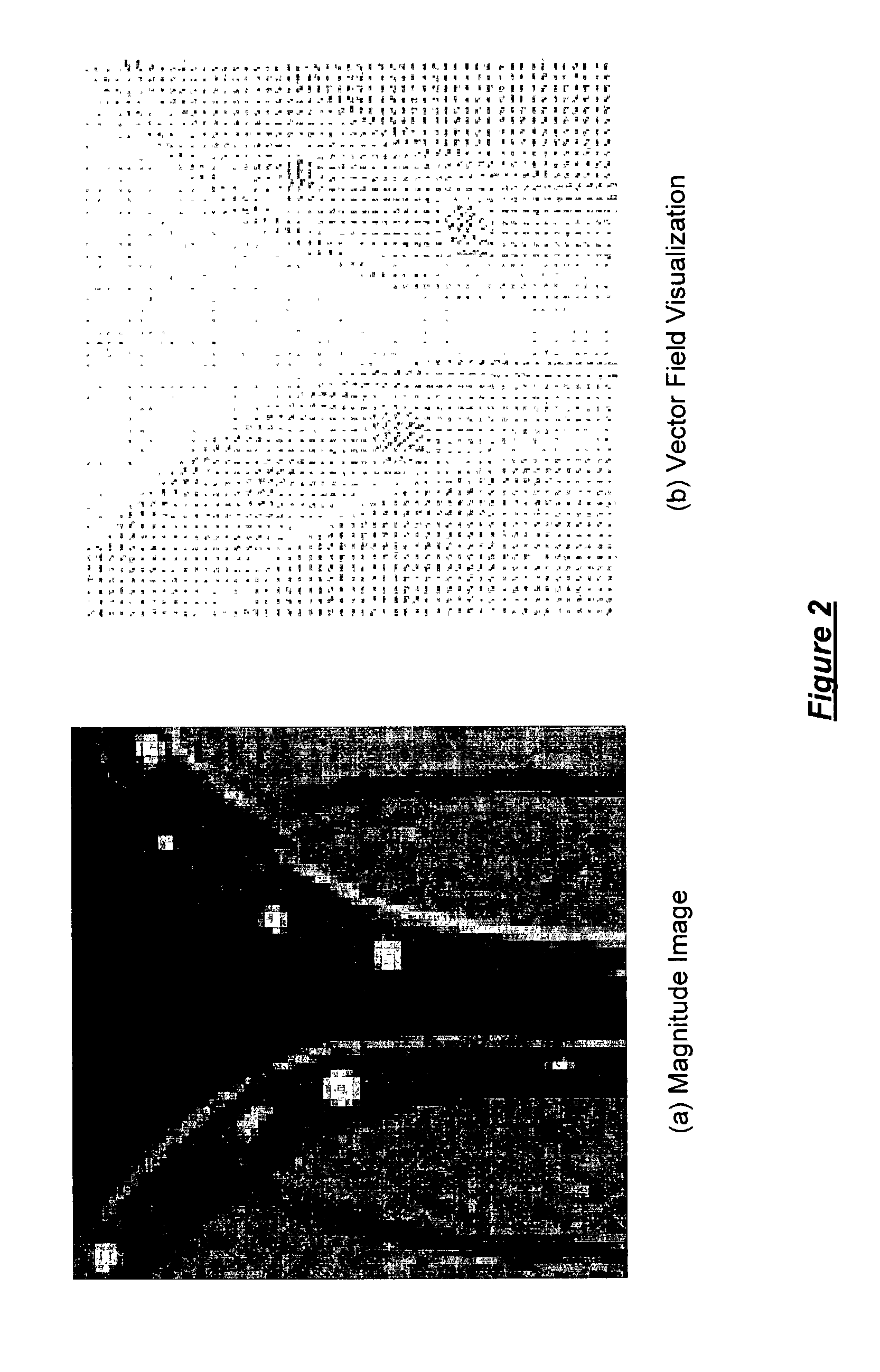Fat/water separation and fat minimization magnetic resonance imaging systems and methods
a magnetic resonance imaging and fat/water separation technology, applied in the field of magnetic resonance imaging systems and methods, can solve problems such as errors in reconstructed images, foil quantitative measurements of small water signal features surrounded by fat-containing tissue, and object borders may also be corrupted by this artifa
- Summary
- Abstract
- Description
- Claims
- Application Information
AI Technical Summary
Benefits of technology
Problems solved by technology
Method used
Image
Examples
working example
[0045]Images of two normal, healthy volunteers were acquired. One dataset was of the head and another was of the legs, as illustrated in FIG. 7. The head dataset was acquired using a GRE sequence on a 1.5 T GE Signa scanner with TE / TR of 6.1 msec / 700 msec and 42 degrees flip angle. Magnitude, real and imaginary images were saved by the scanner. The leg dataset was acquired on the same scanner with 9 msec / 117 msec TE / TR times and 20 degrees flip angle. The complex data was preprocessed using the phase unwrapping algorithm described above. The Guillemaud algorithm with φwater=φfat=0.2, Γwater=0, Γfat=mod2π(TE / 4.85 msec), and Γother=0.3. The results are illustrated in FIGS. 8 and 9.
[0046]The extended two-point Dixon method was implemented for comparison purposes, with the results illustrated in FIG. 10. No attempt was made to register the resulting images. Mis-registration artifacts may be seen in the “difference” images (FIGS. 10(c) and 10(f)). The single-point method provides qualita...
PUM
 Login to View More
Login to View More Abstract
Description
Claims
Application Information
 Login to View More
Login to View More - R&D
- Intellectual Property
- Life Sciences
- Materials
- Tech Scout
- Unparalleled Data Quality
- Higher Quality Content
- 60% Fewer Hallucinations
Browse by: Latest US Patents, China's latest patents, Technical Efficacy Thesaurus, Application Domain, Technology Topic, Popular Technical Reports.
© 2025 PatSnap. All rights reserved.Legal|Privacy policy|Modern Slavery Act Transparency Statement|Sitemap|About US| Contact US: help@patsnap.com



